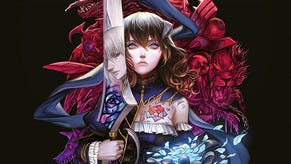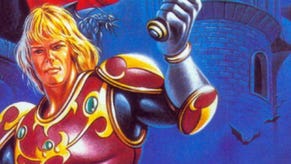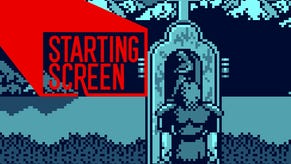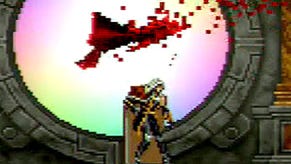10 Things You Didn't Know About Castlevania: Symphony of the Night
STARTING SCREEN | This game's 20 years old and I'm learning new junk about it every day.
This article first appeared on USgamer, a partner publication of VG247. Some content, such as this article, has been migrated to VG247 for posterity after USgamer's closure - but it has not been edited or further vetted by the VG247 team.
"What is an anniversary? A miserable little pile of platitudes!" Yeah, but that's not going to stop me from saying "Happy 20th anniversary!" to Castlevania: Symphony of the Night, which came to North American markets on October 2, 1997.
Symphony of the Night has remained one of my favorite games since I first played it in 1998, and yikes, I feel old. If you asked me, "Nadia, how many words have you written about Symphony of the Night," I'd shrug and say, "I dunno. Zillions?"
I'm not the only one. Jeremy Parish did an incredible Design in Action series for Konami's 2D action / adventure masterpiece. Afterwards, I summed up the contents of each Design in Action entry in honor of the game's 20th Japanese anniversary.

I will take any excuse to write about Symphony of the Night. I think the game deserves to be broken down and discussed for years to come. In fact, if you're not already following freelancer John Learned's Annotated Symphony of the Night video series, you'd best get to watching.
Speaking of, the Annotated Symphony of the Night videos managed to teach me a great deal about a game I thought I knew everything about. I'd like to share some of these lesser-known nuggets of wall meat wisdom.
Did you know:
- You can harass the Librarian to get items—The Master Librarian in the Long Library level has a hole underneath his chair. I don't know why; it might be for those badly arthritic days when he doesn't feel like walking all the way to the washroom. Well, the library's shoddy construction is Alucard's gain. When you inherit the Gravity Boots, you can visit the room directly below the Librarian and leap up through the hole. Doing so sends the Librarian flying, and if you keep doing it, he'll drop rare items—including the Dracula tunic armor item (but only after you visit the Inverted Castle). I'm interested in this!
- The Sword Lord on the Outer Wall is guarding more than a pot roast—Alucard visits the Outer Wall early in the game. One of the structure's corners is guarded by a Sword Lord, a very dangerous enemy to engage at that point in the game. If Alucard defeats it, he can access a room with a breakable wall. Inside that wall there's … a pot roast. Well, pot roasts are excellent healing items, but hardly worth risking life and limb over. If, however, Alucard stands next to the broken wall for about fifteen seconds, he'll ride an invisible platform and collect a pair of jewel knuckles and a mirror cuirass, which are incredibly valuable items to possess at the start of the game.
- You can access the Clock Tower early to level up against strong enemies—I discovered this trick on my own back in the day, because I love making myself miserable. While you're not supposed to explore the Clock Tower until you have the Jump Stone (the level's crumbling floors make for very difficult single jumps), you can technically run across the level's collapsing floors if you transform into a wolf. It takes persistence, and it's not easy, but if you manage to get into the Clock Tower proper, you can level up on strong enemies.
- The "Alucart" set gives you a significant luck boost—The "Alucart" sword, shield, and armor are poor parodies of the Alucard sword, shield, and armor, but if you equip the set, you get a +30 luck boost! Boosting your luck makes it easier to farm rare item drops.
- The benefits of the "Moonstone" and "Sunstone" alternate every 12 hours—The Moonstone and the Sunstone "improve status after sunset" or "dawn" respectively, but what does that even mean? If you're playing on the Sega Saturn and your internal clock is correct, it means the Moonstone improves most of your stats by +5 after 6 pm, and the Sunstone does the same after 6 am. If you're playing on any other system, however (and you probably are), the effectiveness of the Moonstone and Sunstone swap out for every 12 hours of gameplay. The game assumes you start at midnight, so equip your accessories accordingly.
- There are 16 "flashing save icons" because Symphony of the Night's team couldn't decide which one to use—The Symphony of the Night episode of DoubleFine's "Devs Play" series is a treasure room of trivia and information. For example: Did you know the Symphony of the Night team whipped up those charming "Save File" icons as part of an internal contest, but all the submissions wound up being used because they couldn't decide on a winner? To be fair, they're all amazing. Have you ever seen the Konami Man icon? He's rather rare.
- Koji Igarashi and the rest of the Symphony of the Night team were disappointed with the quality of the opening and ending movies—According to DoubleFine's Devs Play video for Symphony of the Night, the opening cinematic that takes us on a tour of Castlevania's exterior wound up being a big disappointment for the team. The cinematic, which was farmed out to another team in Konami, is supposed to show off the power of the PlayStation. Instead, the flat, texture-less model is an eyesore next to Symphony of the Night's beautiful sprite-based graphics.
- "What is a man?" A quote from a 20th century French writer, apparently—Dracula's sneering question about humankind isn't an original piece of writing. It's not even in the Japanese opening of Symphony of the Night. It's a quote from French novelist, adventurer, and art historian André Malraux. Malraux lived from 1901 through 1976—some time after the events of Symphony of the Night, in other words. Hmm. His quote was added to Dracula's repertoire by Symphony of the Night's translator, Jeremy Blaustein.
- You can manipulate the "Now Loading" text—Did you know you can use your controller to make Symphony of the Night's "Now Loading" text swoop and loop-de-loop? It's a fun way to pass time while the game loads, though load times aren't much of an issue in digital re-releases of the game. Still, if you ever decide to replay Symphony of the Night on the PlayStation, give it a try.
- The "Bloodlines" opening serves a purpose other than story exposition—In 1997, the opening scene for Symphony of the Night confused a lot of players outside Japan. The interactive cinema replays the climax of Rondo of Blood, a 1993 Castlevania game for the PC Engine. Rondo of Blood wouldn't receive an official English release until much later, and in the meantime, we had no idea who Richter Belmont was. Worse, the "Bloodlines" titling made us think the single Castlevania game released for the Sega Genesis tied into Symphony of the Night's story, which it doesn't. We spent so much energy on sussing out the meaning of "Bloodlines " that most of us failed to realize our performance in the fight against Dracula has major effects on Alucard's stats. Fact is, the better you do against the Lord of Darkness, the stronger Alucard becomes. Here's the breakdown, just in case you want Alucard to be all that he can be next time you play.
Nadia's Note Block Beat Box: Dance of Pales from Castlevania: Symphony of the Night
What'd you expect? An analysis of the music in Color a Dinosaur? No, no. We started with Symphony of the Night, and that's where we'll end.
Dance of Pales is one of those songs that makes me wish I could play piano. It's so pretty, so calming. It starts with a gentle piano, then the strings gradually build up. Louder, louder, louder, until a knight on a zombie horse comes flying out of stage right and stabs your ass into next Tuesday. Man, this game is great.
"Dance of Pales" is a mistranslation, by the way. It's supposed to be "Dance of Pearls," or "Waltz of Pearls." I don't know anyone who calls it that, though. "Dance of Pales" evokes a much more sinister mental image. Like, a ballroom full of ghosts and zombies dressed all fancy and twirling, twirling, twirling. Heck, there's nothing more Castlevania than dancing ghosts, so "Dance of Pales" it is.

Mike's Media Minute
It's a very weird time for entertainment right now. The 2017-2018 television season has begun in earnest, offering up the return of some of my favorite shows and the start of a few new ones. On the returning track, I'm already enjoying or looking forward to The Good Place, Brooklyn Nine-Nine, Arrow, Legends of Tomorrow, Supernatural, Black-ish, Fresh Off The Boat, The Shannara Chronicles, Agents of SHIELD, and Stranger Things. There are a few shows that need to prove themselves to me again after uneven previous seasons, including Flash, Supergirl, and Dirk Gently's Holistic Detective Agency.
But the real point of any season is the new stuff. I wrote last week about Star Trek: Discovery, which airs in the U.S. on CBS All Access. This week marked a solid shift for the series, acting as the "real" pilot episode for the show after the bombastic TV movie opener. If you're looking for something a bit more along the lines of The Next Generation, The Orville has finally settles into a solid show with its latest episode. It definitely feels like creator Seth MacFarlane has a love for Star Trek, but the humorous side of the show undercuts the rest. If future episodes can thread the needle between scifi explorations of ideals and that light humor, I think it could be a winner.
I'm also looking forward to The Gifted, which is Fox's second shot at a television show based in the X-Men film universe. (The first is the excellent Legion on FX.) The focus of the show is a family whose patriarch hunted mutants until his kids became mutants, but the supporting cast is filled out with X-Men like Blink, Polaris, and Warpath. It looks solid as a scifi drama, which Fox has needed since Fringe went off the air. In other superhero fare, the CW expands again with Black Lightning this season. The less that's said about The Inhumans, the better.
I want to like Ghosted, the new Ghostbusters-style comedy starring Craig Robinson and Adam Scott, but early review haven't been great. I love both actors, so hopefully the showrunners can right the ship. Mindhunter on Netflix comes care of David Fincher, exploring the FBI agents who studied serial killers to create the concept of profiling. Philip K. Dick's Electric Dreams is a BBC production showing on Amazon Prime, offering a Black Mirror-style anthology series based on the author's short works. Also on Amazon Prime is Lore, the TV show based on the podcast of the same name. And somewhere in there, Netflix will finally give us a launch date for The Punisher, the latest Marvel show following the disappointing Iron Fist and uneven The Defenders.
Who knows what other gems are out there? I'll see how the season pans out.

Caty’s AltGame Corner
One of my favorite annual art galleries of the year is the My Famicase Exhibition, where artists from all around the world dream up their imaginative, impossible Famicom games. The winning 100-or-so designs are then selected by organizer Satoshi Sakagami, stickered directly onto actual Famicom cartridges, and are put on display in the Tokyo game store and art gallery METEOR.
This year's faux-games were no less endearing. From open world games to restaurant simulators, they're all titles that would be seemingly difficult to actually materialize on the 1983 console. In recent years though, some independent developers have tried their darndest to make the games happen. Maybe not for the Famicom directly, but at the very least at some capacity building on the made-up names and synopses, and releasing them through the A Game By Its Cover game jam.
This year's A Game By Its Cover wrapped up last Wednesday. In total 128 games were submitted, all with their own unique realizations of the faux-games from the My Famicase Exhibition. Late last week, I browsed through the submissions, remembering my favorite pieces of art from the exhibition. The results creative game makers put forward did not disappoint.
The following are some of my favorites from this year's A Game By Its Cover. Saturdays, from developer pizzamakesgames, is an eerie lo-fi horror game about venturing into a new dimension. On the opposite spectrum, Shark Blaster is an adorable pastel-hued side-scrolling shooter from developer Aaron Mzn. Super Sneaker Maker is exactly what it sounds like—a sneaker designing simulator, from developer erabbit. Secretstage's The Gaia Directive is perhaps the most breathtaking of them all. It's an exploration-focused audiovisual experience with gorgeously haunting vistas.
All these games are wildly different from one another, but show that even when artists make up a concept that might not feel realistic for a game, the A Game By Its Cover game jam proves that nothing is truly impossible in the realm of video games. (As PaRappa might say, you gotta believe.)
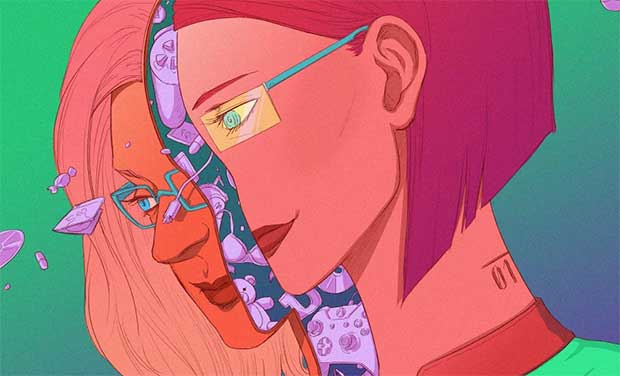
Matt’s Monday Mornings
Over the weekend I finished reading Cara Ellison's 'Embed With Games: A Year on the Couch With Game Developers'. If video game journalism and indie games have just one book to commemorate their shared experiences, it would be Ellison's gonzo project.
'Embed with Games' was recommended to me by nearly every video game journalist I talked to and I'm glad I finally got a chance to read it. At once deeply personal, and finely reported, 'Embed' is the kind of book I wish I had when I took that "History of Video Games" class back in college (it was a bad class). It was weird reading some parts of it because I definitely remember that 2014-2015 year in indie games covered in the book, but it's strange to see how the industry changed since the book's publication. Some of the promises of indie games mentioned in that book failed to materialize, while other video game projects only just came out.
I find myself mulling over one section of the book in particular, which is when Ellison covers the indie game craze of live social spaces as shared through motion controls or the smartphone. It's something that I don't see around very much these days and it feels like a very 2015 kind of indie game genre. Whether this dates the book, or makes it feel like the perfect time capsule for a very ambitious year in indie games is something I have to chew on.

This Week's News and Notes
- Word just came in about Tom Petty dying. That's a hell of a shame; nothing reminds me of my early teen years like Last Dance with Mary Jane. Speaking of, the cadaver in that music video is played by Kim Basinger, who is also the inspiration for Samus Aran's phenotype. Yeah, sorry. I have no talisman that makes bad news hurt less. Just useless trivia.
- Stardew Valley is on Switch! Who should I marry this time? I've already conquered Sebastian and Shane.
- RIP Wii Shop Channel. May your jazzy music reverberate in our heads forever. Games industry, we need to sit down and have a serious talk about game preservation.
- Please remember to listen to / comment on our podcasts! There wasn't an official USgamer Podcast last week because gremlins chewed up the magnetic tape we record the show on, but Axe of the Blood God filled in the gap nicely. Kat and I talk about Final Fantasy IX, the SNES Classic, and awful SNES RPGs. I mention the box art for Secret of the Stars creeps me out, so Kat took pains to find a high-res scan and use it as our banner art for the show. Thanks, Kat!
- Today's been … challenging. Don't be ashamed to take some time for yourself. Unwind, unplug, relax. Now's as good a time as any to break in that SNES Classic Edition.




